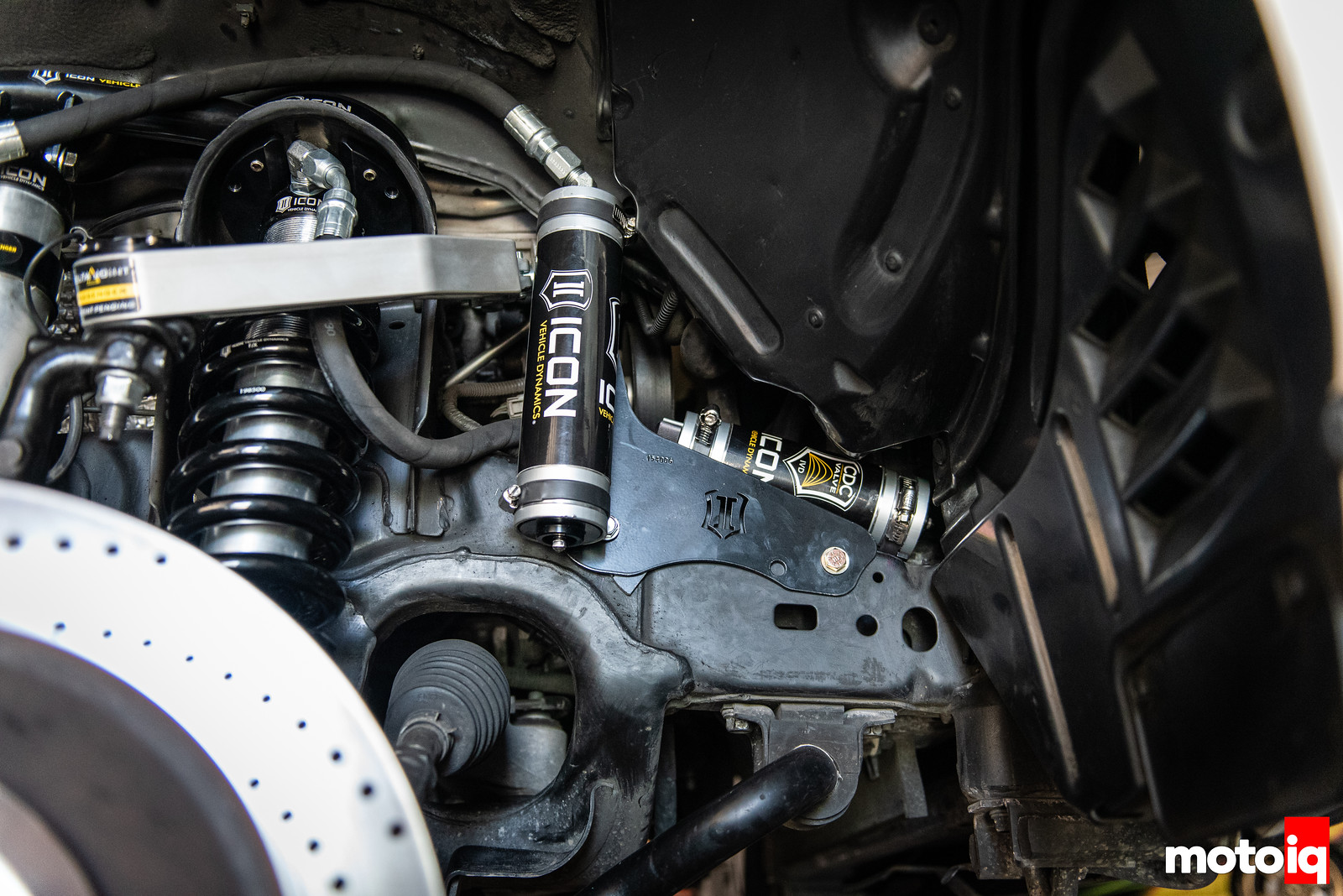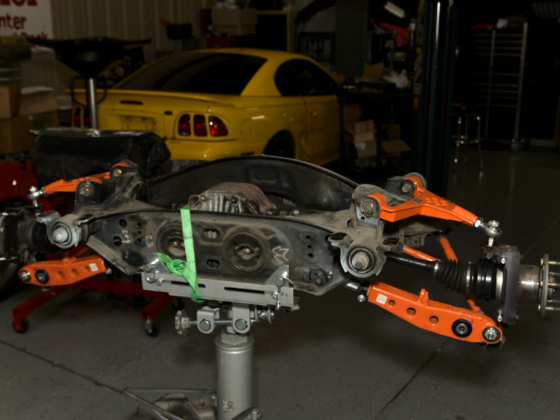
We took Project Tundra off roading going through every surface we could easily find, from smooth and fast dirt roads, to rocky riverbeds to rough, rutted rock strewn roads. We were really impressed how well the Icon suspension worked, we were able to go faster than any other truck we ran into and we could go much faster with more control than our previous suspension. Our Nitto Ridge Grappler tires are 10 ply E rated with really stiff sidewalls for load capacity when towing and this limits their compliance for off road use when airing down. Even with the stiff sidewalls we were amazed with how well the suspension worked and how resistant to bottoming it was. We found that it didn’t do much good to air down much below the high 20’s and settled at about 28 psi. This is sort of hard for off roading floatation. If you are more into off roading and less into using your truck as a work truck, don’t use the heavy duty E rating versions of the Ridge Grapper. This way you can run much softer air pressure to experience an even smoother off road ride and more traction.

We were hucking the truck into this creek to really test the bottoming resistance of the suspension. Although we were using the full stroke and were getting air, dropping in and plowing out and bombing though big rocks and water you could not feel the suspension bottoming. We put the truck into 4WD so we could get more traction to get more speed! We were going as fast as 50 mph. We could have gone slightly faster but the water made it hard to see and traction was the limiting factor for acceleration off the last set of turns before the creek.

You can see our negative camber here, just like an off road race truck!

Going slow, you can see how rocky and rutted the creek bottom was.

These are big rocks were were bombing over at up to 50 mph. Now that we are looking at it, maybe that was not so smart but the Tundra was undamaged and we didn’t bend our TE37X wheels except for putting some small scratches into them.

Jeff was trying to get a picture of me jumping the truck. He did mange to get one right when it was landing. I think we might have gotten 6 inches which isnt that much but its a lot for an OEM based bolt in suspension especially considering that coming out of the creek was a steep lip type ramp. With our damping adjustments, the rear of the truck didn’t kick up which is typical for this sort of bump.




14 comments
It’s always interesting to see these builds that showcase higher end components than most people will reach for. That being said, I think you are pushing the envelope of calling this “bolt on” when you needed to weld the shock mounts, fabricate your own brackets, and cut away the inner fender. I still appreciate the design work that went into this suspension package.
Thank you for the edit suggestions. These mods are very minimal when compared to a lot of dual shock conversions and rear suspension conversions that add this much travel. If you look at our build series our first step was pure bolt on and we wanted to go beyond that.
I’m trying to understand from the pictures, but does the top hoop in the front bolt to the frame, come up and attach to the top of the coilover mount? do the 4 top hat bolts pass through the hoop assembly into the coilover? I love how this setup is essentially a long travel system without adding the longer upper and lower control arms. Jealous for sure.
You got the loop mount right! This system has a lot more droop than the stock suspension and gives you about 1″ more up travel than the stock suspension and a couple more in droop in the front and about 2 more inches of up travel in the rear and 5 more inches of droop so if you get air born, the suspension will droop and give you more travel to absorb the landing.
This is all out of my range of experience. Big trucks, open wilderness and fast bombing of stuff.
Are you going to post some comparison videos that can highlight the differences?
Yes the video is coming out this week or next week.
It’s a bit of a shame that suspension companies ONLY make off road suspension kits. Nobody makes lowering or street kits for trucks anymore. I really want to lower my Tacoma but there’s only a single low quality lowering kit for it and it only has a 2″ drop. I don’t intend to do any real off-roading with my truck and I think lowered 4-5″ with some nice fat wheels and tires would look really good and make it a bit more practical for the towing/commuting/hauling I do with it. I bet the Icon dampers with some custom springs and arms would work really nicely.
I’ve done a tundra with icon coilovers with the same damping benefits with the lift collar all the way up and it was the same height as stock. It also enjoyed the same ride & handling benefits seen here in Mike’s experience.
So you basically have a Toyota Raptor. Very cool. My friend owns a Raptor and when he took me out and jumped it I was ready to crap my pants. . . until we landed. That thing jumps smoother than my trucks take a washboard dirt road. I have been nothing but disappointed with run of the mill Bilstein “heavy duty” shocks. If you want quality damping unfortunately you really have to open your wallet.
I’m running the same Icon RXT leafs and Omega bypass shocks on my 17′ Tundra, and need to install some air bags for towing. Hoping you could give a parts break down for what was used on this build, specifically the upper and lower mounting brackets for the bags and cradles. Thanks in advance and crazy nice build BTW!
All the parts and the manufacturers are listed in the article.
yea but who makes those offset mounts for the airbags?
Comes with the airbags.
You got the loop mount right! This system has a lot more droop than the stock suspension and gives you about 1″ more up travel than the stock suspension and a couple more in droop in the front and about 2 more inches of up travel in the rear and 5 more inches of droop so if you get air born, the suspension will droop and give you more travel to absorb the landing.